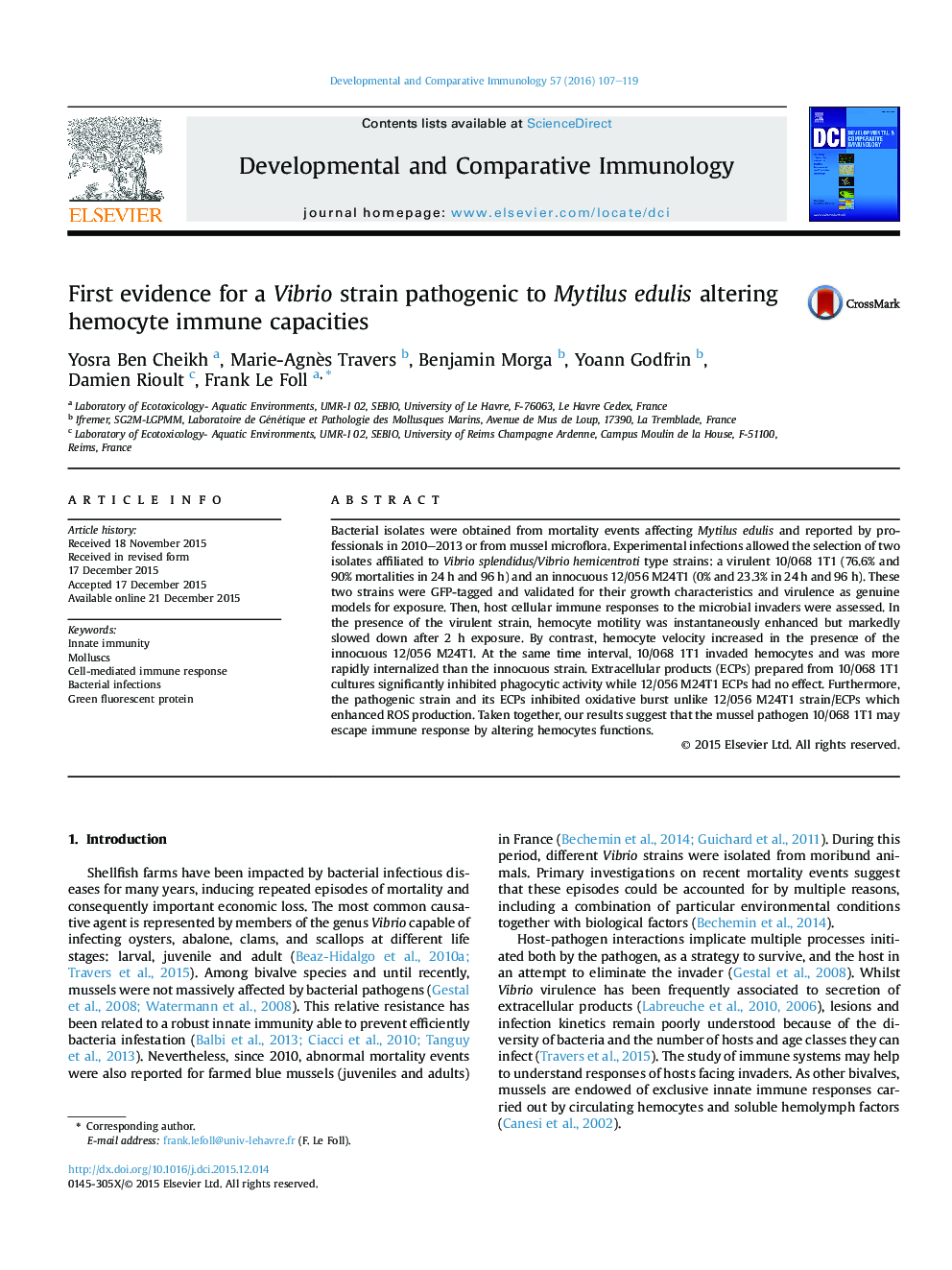| Article ID | Journal | Published Year | Pages | File Type |
|---|---|---|---|---|
| 8498037 | Developmental & Comparative Immunology | 2016 | 13 Pages |
Abstract
Bacterial isolates were obtained from mortality events affecting Mytilus edulis and reported by professionals in 2010-2013 or from mussel microflora. Experimental infections allowed the selection of two isolates affiliated to Vibrio splendidus/Vibrio hemicentroti type strains: a virulent 10/068 1T1 (76.6% and 90% mortalities in 24Â h and 96Â h) and an innocuous 12/056 M24T1 (0% and 23.3% in 24Â h and 96Â h). These two strains were GFP-tagged and validated for their growth characteristics and virulence as genuine models for exposure. Then, host cellular immune responses to the microbial invaders were assessed. In the presence of the virulent strain, hemocyte motility was instantaneously enhanced but markedly slowed down after 2Â h exposure. By contrast, hemocyte velocity increased in the presence of the innocuous 12/056 M24T1. At the same time interval, 10/068 1T1 invaded hemocytes and was more rapidly internalized than the innocuous strain. Extracellular products (ECPs) prepared from 10/068 1T1 cultures significantly inhibited phagocytic activity while 12/056 M24T1 ECPs had no effect. Furthermore, the pathogenic strain and its ECPs inhibited oxidative burst unlike 12/056 M24T1 strain/ECPs which enhanced ROS production. Taken together, our results suggest that the mussel pathogen 10/068 1T1 may escape immune response by altering hemocytes functions.
Keywords
Related Topics
Life Sciences
Biochemistry, Genetics and Molecular Biology
Developmental Biology
Authors
Yosra Ben Cheikh, Marie-Agnès Travers, Benjamin Morga, Yoann Godfrin, Damien Rioult, Frank Le Foll,
